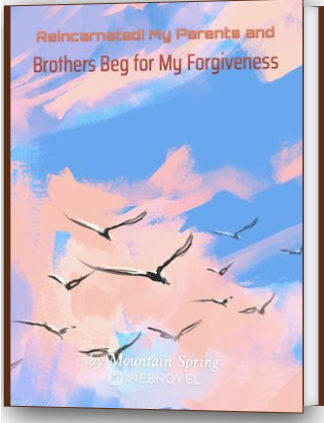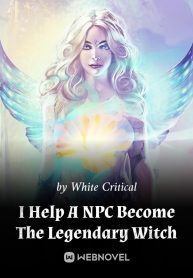Chapter 547 Demon God of Extinction (2)
The cultists possess a nihilistic worldview, believing that life is ultimately meaningless and that the pursuit of pleasure, power, or knowledge is futile in the face of impending doom. They see their devotion to the Demon God as a means of achieving significance in a world that is otherwise devoid of purpose.
The cultists exhibit fanatical zealotry, often willing to sacrifice anything, including their own lives, to further the goals of their malevolent deity. They view themselves as the chosen instruments of the Demon God's will and are willing to commit acts of terror and destruction to bring about their vision of the end.
The cult actively seeks to propagate despair and hopelessness in society at large. They spread their nihilistic beliefs and aim to weaken the resolve of individuals and societies, convincing them of the futility of resistance against the inevitable. This psychological warfare is seen as a means of hastening the arrival of the end.
Cult members believe that by serving the Demon God of Extinction faithfully, they will be rewarded with power and protection in the face of the apocalypse. They envision themselves as the chosen few who will emerge unscathed from the cataclysm, granted authority over the remnants of a shattered world.
lightsΝοvel The Cult of Devotees is a dark and malevolent sect that thrives on the anticipation of universal obliteration. Their devotion to the Demon God of Extinction leads them to commit heinous acts and spread despair, all in the hope of securing a place of significance in a world marked by its inexorable demise.
The realm and domain of the Demon God of Extinction is a nightmarish and desolate plane that stands as a testament to the ultimate end of all things. In this dark and foreboding domain, the forces of decay and destruction reign supreme, and time itself is a relentless harbinger of despair.
In this grim realm, everything is in a state of perpetual decline. The land itself is marred by unending erosion, with mountains reduced to mere pebbles and once-majestic forests reduced to gnarled and lifeless husks. Rivers run dry, their once-mighty currents reduced to barren channels.
Darkness envelops the realm in an unbroken shroud. There is no day or night; instead, the domain is bathed in a perpetual twilight that is devoid of the comforting presence of the sun or stars. The eternal dimness deepens the sense of despair, as the concept of light and hope is extinguished.
The very landscapes of this domain are twisted and nightmarish. Jagged, ashen rocks dominate the terrain, with bizarre and surreal formations that defy nature. Trees are contorted and lifeless, their branches resembling skeletal arms, and the ground is cracked and parched, devoid of fertile soil.
An eerie silence pervades the realm. There are no sounds of life or vitality, no birdsong, no rustling leaves, only the occasional whisper of a malevolent wind. The silence amplifies the sense of hopelessness and isolation.
Ruined and dilapidated structures dot the landscape, remnants of forgotten civilizations. These structures, once symbols of grandeur and achievement, are now decrepit and abandoned, reflecting the inexorable march of time toward decay.
Time itself is warped in this domain. Moments of joy or hope are fleeting, while periods of suffering and despair seem to stretch on endlessly. The concept of time loses its meaning, leaving inhabitants in a state of perpetual disorientation and unease.
The realm is devoid of life, with no flora or fauna to be found. The absence of life serves as a haunting reminder of the ultimate fate that awaits all living things. The land itself seems to reject the presence of life, as though it is determined to ensure its own bleak solitude.
Inhabitants of the realm are enveloped by an overwhelming sense of despair and hopelessness. This emotion is not just a mood but a tangible force that weighs upon all who tread within the domain, crushing their spirits and extinguishing their will to resist.
The realm of the Demon God of Extinction is a place where the very concept of life and hope has been extinguished. It serves as a chilling reminder of the inevitability of decay and destruction, a domain where the relentless forces of oblivion have eclipsed all that once was, leaving only desolation and darkness in their wake.
The symbols and iconography associated with the Demon God of Extinction are a reflection of the cult's and the deity's dark, nihilistic ideology, and they serve to evoke a sense of dread and foreboding. These symbols emphasize the perverse embrace of darkness, decay, and ultimate destruction that are central to the cult's beliefs and rituals.
The twisted, inverted pentagram is a prominent symbol in the worship of the Demon God of Extinction. Inverted pentagrams represent a perversion of life and the rejection of traditional moral and spiritual values. The upward-facing pentagram is often associated with spirituality, while the inverted version is seen as a symbol of materialism and the rejection of the divine. In the context of the cult, the inverted pentagram underscores their embrace of darkness and the pursuit of the malevolent entity's favor.
Depictions of decayed and shattered worlds are common in the iconography. These images symbolize the cult's belief in the inevitable disintegration of the universe and the futility of resisting it. They serve as stark reminders of the transitory nature of existence and the ultimate destiny of all things to crumble into oblivion.
Art and symbols often depict morbid scenes of the end, with apocalyptic landscapes, crumbling cities, and suffering individuals. These images serve as a visual representation of the cult's reverence for the Demon God's power to bring about annihilation and their desire to hasten the arrival of such dark times.
Cult members frequently wear grim and elaborate robes adorned with the aforementioned symbols. These robes are worn during dark rituals and ceremonies, reinforcing the cult's connection to the malevolent entity. The symbolism on the robes serves to visually represent the cult's commitment to the worship of the Demon God of Extinction.
The cult possesses a collection of esoteric texts and scriptures that contain detailed accounts of the entity's powers, prophecies of the end, and instructions for conducting dark rituals. These texts are adorned with the same symbols and iconography, reinforcing their commitment to their dark beliefs.nove/lb/1n
In their rituals, cultists often whisper the name of the Demon God of Extinction with dread and reverence. These hushed chants are intended to invoke the presence of the malevolent deity and emphasize the cult's belief in its power.
The symbols and iconography associated with the Demon God of Extinction are meant to immerse the cult and its followers in a visual and symbolic world of darkness, decay, and annihilation. They are a constant reminder of the cult's nihilistic beliefs and its relentless pursuit of the embrace of ultimate destruction.
The legend and lore surrounding the Demon God of Extinction are steeped in darkness, despair, and a profound sense of foreboding. This malevolent figure serves as a cautionary tale, a chilling reminder of the consequences of unchecked power and the inexorable nature of the forces that can consume even the mightiest of beings.
The legend begins with the rise of the Demon God of Extinction, an entity born from the darkest corners of the cosmos. It is said to have emerged when the universe itself was in its infancy, an embodiment of the primal forces of annihilation and entropy.
As the legend unfolds, it tells of the Demon God's insidious influence on mortal souls and the corruption of entire civilizations. Those who came into contact with the malevolent deity were consumed by despair and hopelessness, and they willingly embraced the darkness, believing it to be the ultimate destiny.
The legend underscores the perversion of power and the malevolent entity's insatiable hunger for destruction. It reveals the hubris of those who sought to harness the Demon God's might, only to be consumed by their own ambition and brought to ruin.
The legend describes how the arrival of the Demon God of Extinction heralded an endless night, a time when light and hope were extinguished from the world. This eternal twilight served as a constant reminder of the entity's dominion over the forces of darkness and decay.
The legend paints a vivid picture of the ultimate despair that overtook the world in the presence of the Demon God. It tells of entire societies descending into madness, as individuals and civilizations succumbed to the malevolent deity's corrupting influence and willingly embraced their own annihilation.
The Demon God of Extinction stands as a symbol of the unchecked forces of oblivion that exist in the cosmos. The legend serves as a stark reminder that, despite humanity's achievements and ambitions, there are forces beyond their control, capable of bringing about the end of all things.
The legend underscores the impermanence of all existence. It reminds individuals of the fragility of life and the ever-present threat of annihilation, emphasizing that, in the grand tapestry of the universe, everything ultimately succumbs to the inexorable forces of decay and destruction.
Above all, the legend of the Demon God of Extinction serves as a cautionary tale, warning against the hubris of those who would seek to wield power without regard for the consequences. It is a chilling narrative that urges humility in the face of the universe's dark and relentless truths.
The legend and lore of the Demon God of Extinction is a haunting narrative that confronts mortals with their deepest fears and the stark realities of existence. It stands as a reminder that, in the grand scheme of the cosmos, the forces of darkness and annihilation are ever-present, and the unchecked pursuit of power can lead to catastrophic consequences.
"Tch... they've completely forgotten about us," the throne world around this being shook with the force of a thousand magnitude ten earthquakes. "It's about time we reclaim our spot as the strongest."







